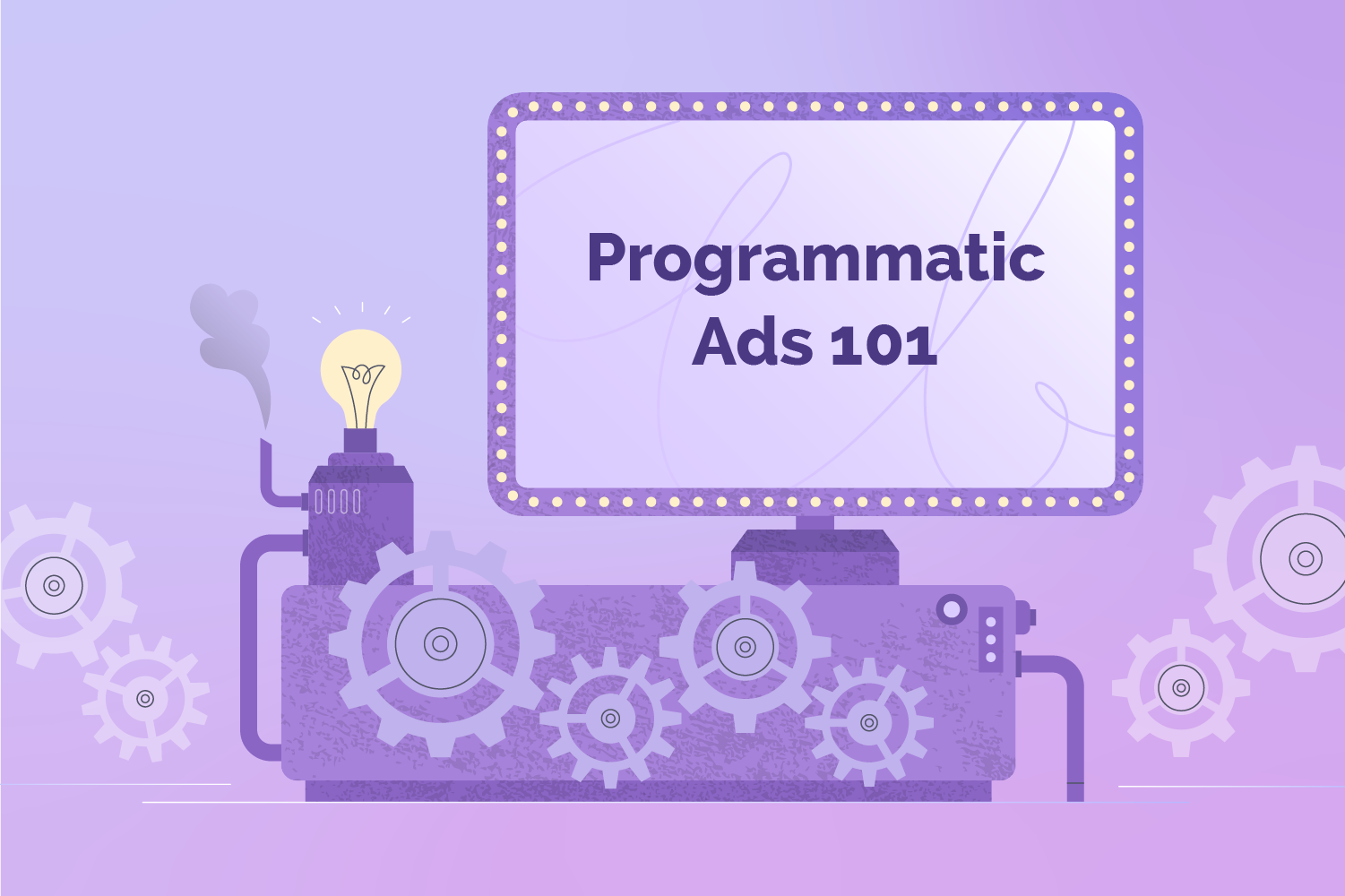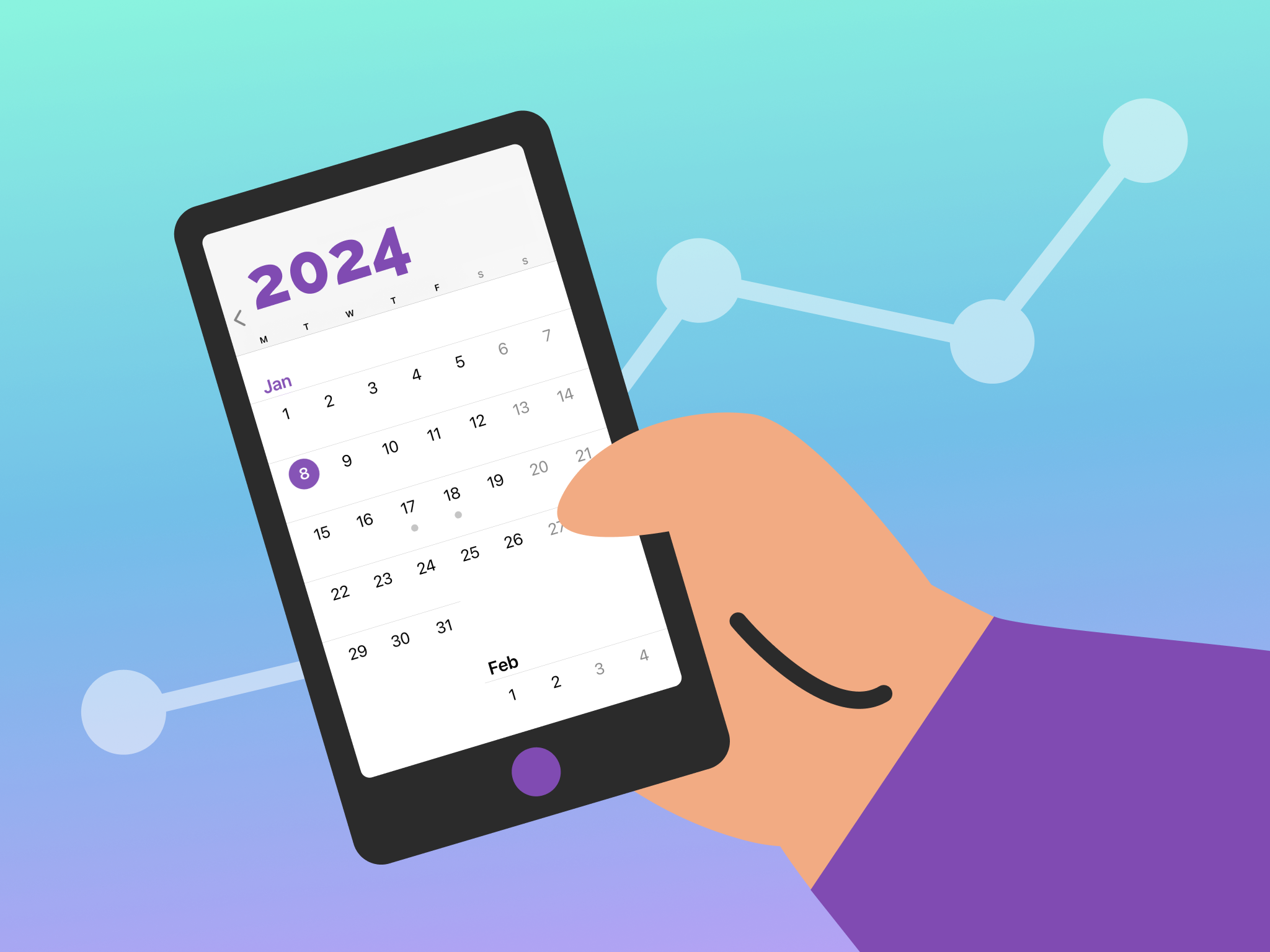The Covid-19 pandemic slowed down economic growth all over the world. Supply chains were disrupted and business models were made dysfunctional. However, one of the few industries which still showed growth was within digital marketing, specifically in programmatic advertising.
According to Emarketer’s latest Digital Display Forecast, advertisers increased their spend on programmatic digital ads in the US by 24.1% in 2021. Programmatic advertising is forecasted to continue to grow at a healthy rate, especially in CTV (Connected TV) environments which are projected to outgrow all other areas by a whopping 52.9% in 2022. Display ads are also predicted to grow by 18.4%.
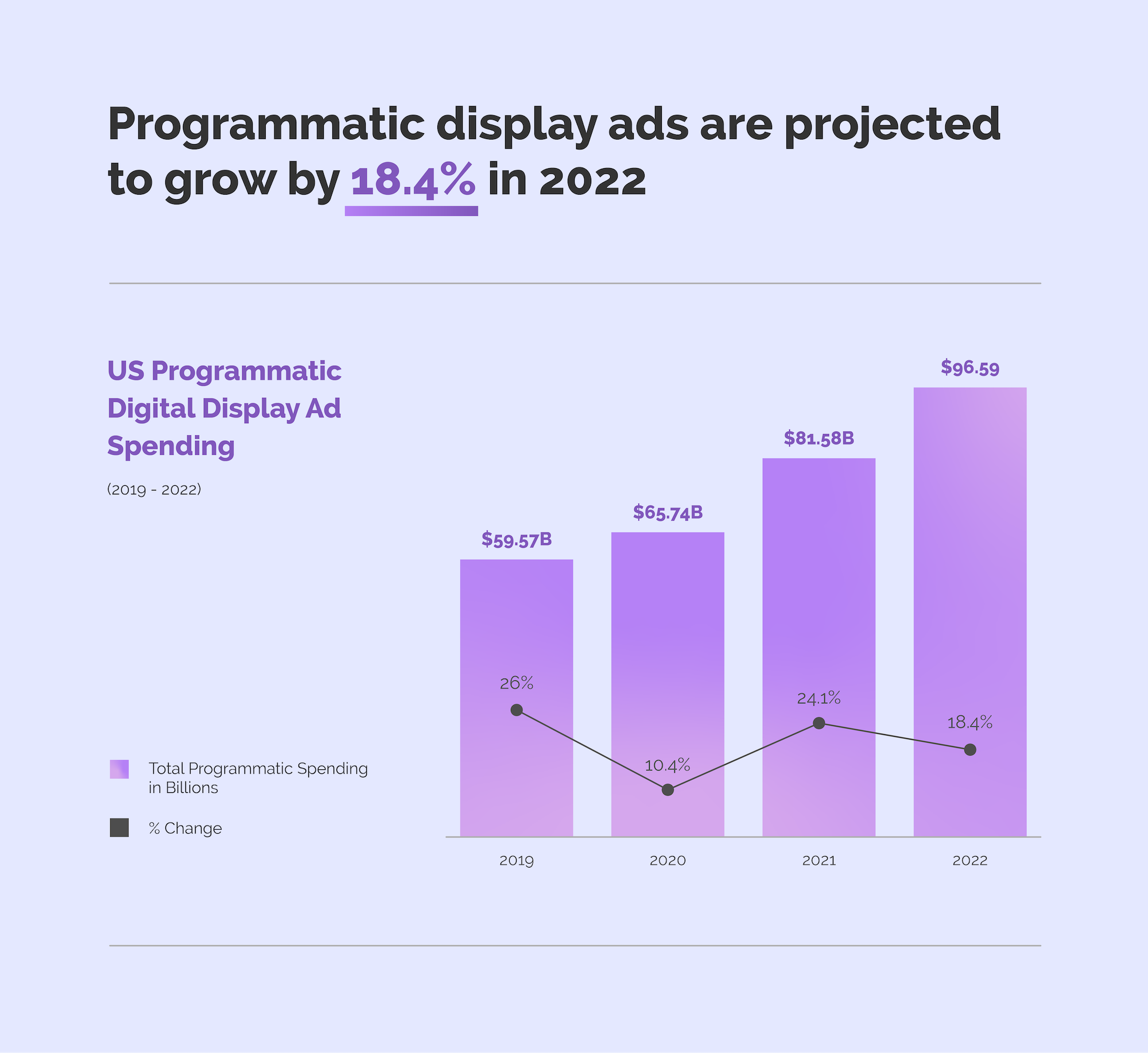
In this article, we have a closer look at programmatic advertising and how programmatic ads can benefit your campaigns.
What is programmatic advertising?
First, let us start at the beginning with a definition of programmatic advertising. Programmatic advertising uses software and data – operated and selected by humans – to make media buying & selling decisions in milliseconds.
Forms of programmatic advertising have been around since the early days of Google’s Adwords and Display ad networks, dating back to the mid-00s. Essentially, Google’s idea to monetize their “ad slots” on the SERP (search engine results page) by letting advertisers compete on keywords in a CPC-based auction has laid out the foundation. This systematic approach had all the core elements of what now defines programmatic advertising.
- A self-serve platform to let marketers manage their own campaigns – A campaign setup that is controlled by the client with no spending commitment.
- A real-time auction-based approach – A bidding strategy that is defined by the client.
- Targeting based on keywords – A targeting strategy that is defined by the client.
Search and paid social are still distinct channels that stand separately from what is commonly perceived as programmatic advertising.
What is the difference between programmatic and traditional advertising?
The ads are the same, the publishers are the same – so how is programmatic different from old-school media buying? Programmatic advertising is the evolution of traditional media buying that involves manual IOs, reconciliations, emails and calls. Whereas in programmatic advertising the buying process is centralized, automated and optimization is continuously done to achieve the best possible outcomes.
Because of this, marketers are saving lots of time and are able to set up, steer and control marketing activities much faster than ever before. Programmatic brought a lot of changes for media buyers and sellers. Dynamic CPMs, because of the bidding approach in DSPs (Demand Side Platforms), were a novelty for buyers. For sellers, SSPs (Supply Side Platforms) needed to be developed to allow publishers to source and yield their inventory in an effective manner.
Lastly, the data from DMPs completed a sophisticated programmatic ecosystem to provide information about each ad impression. In turn, this helped advertisers to determine the value of each ad impression and what they are willing to pay for the specific impressions.
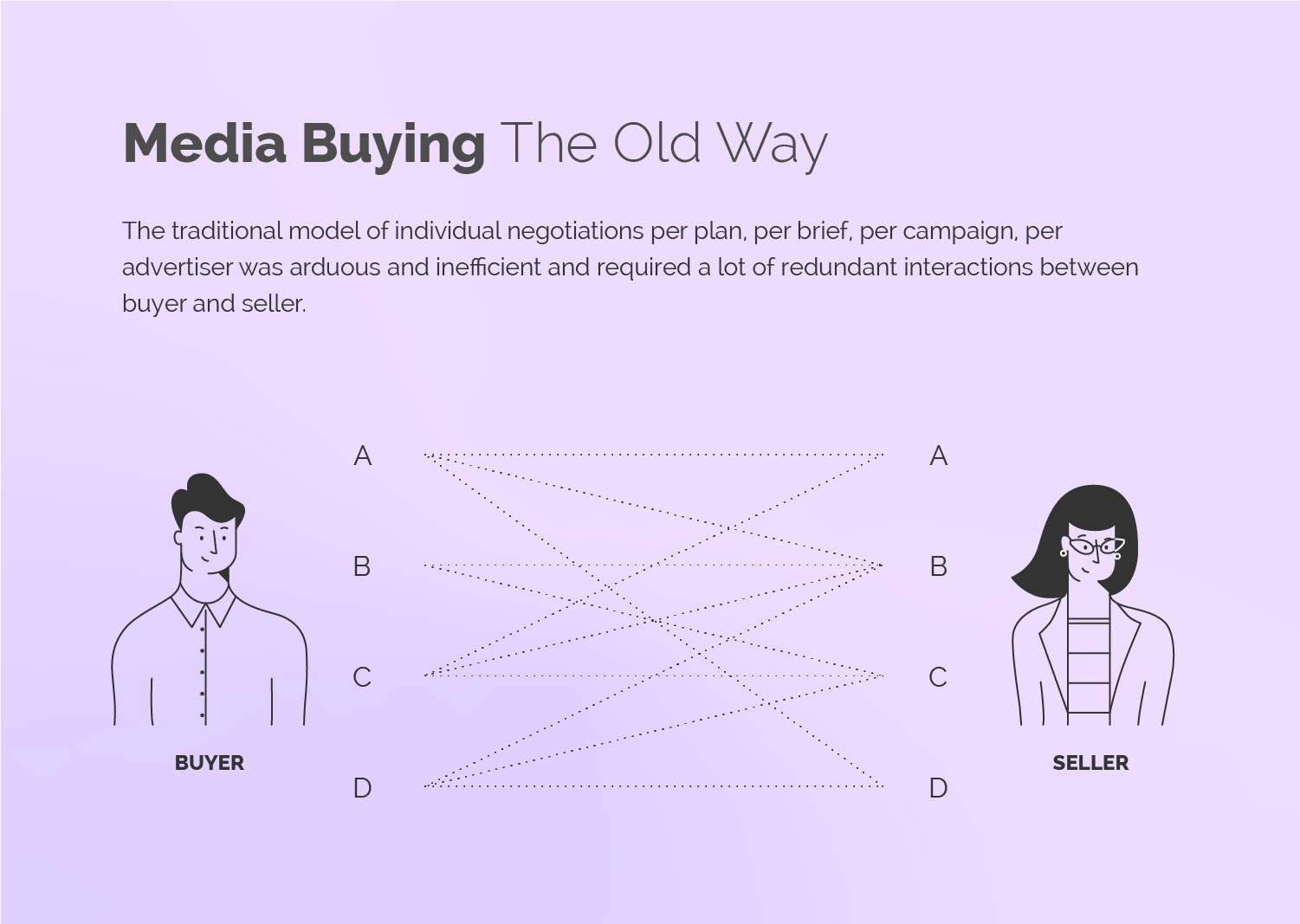
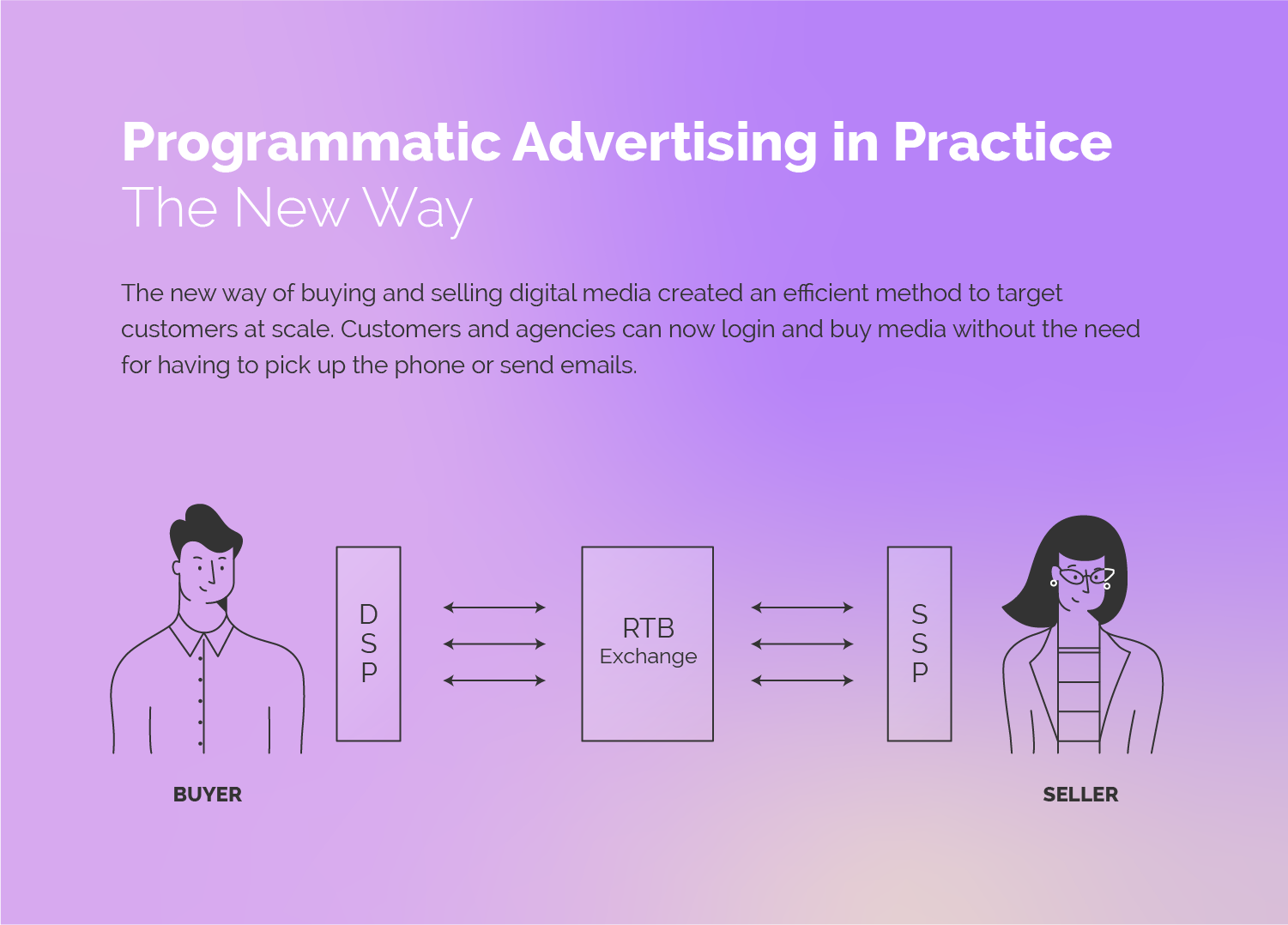
What is a programmatic ad platform?
Programmatic is a sophisticated form of buying media that can be complex to understand when you start out. A high degree of automation needs an evolved infrastructure and the learning curve can be steep. The industry is constantly evolving, so there are always new technologies that have a tremendous impact on the industry. The Ad Tech Lumascape is giving an overview at a glance of companies that are within the programmatic ecosystem.
The most important acronym for the advertiser is a DSP – a Demand Side Platform. This is the system where advertisers set up, manage and optimize their campaigns. A DSP is a platform that combines audience buying and smart bidding to enable the automated buying of ad space at scale. You may have come across DSP predecessors like Google Ads or Facebook Ads/Business Manager.
What are the differences between Google Ads and a DSP?
You might already have had contact with Google Ads, which is a form of biddable media, in a way similar to a DSP, however, there are general differences between Google Ads and Enterprise DSPs.
Agencies tend to use DSPs in general. A DSP requires more expertise but you are going to gain increased control and ability to leverage data sources, the ability to scale cross exchange, and the benefits of an integrated stack.
GDN is more suitable for beginners with limited options to manage campaigns. In Google Ads you will have less control over data and inventory and there will be more automation in the system. The ads will only run within the Google Display Network. With Google Ads, a lot of the control and the decision making is still with the system and not the advertiser.
A DSP is a high-powered software built for marketing organizations. You will have more control over data (1P/3P) and access to more inventory. You will have more options to steer your campaign towards optimum performance, but the performance of your campaign is also more subject to the decisions taken by the specialist handling the campaigns. Smart decisions will result in the best performance, which are taken by the marketer in front of the screen.

What are the benefits of programmatic ads for agencies?
The technology behind programmatic advertising allows complex and custom-tailored marketing setups for each advertiser. We’d advise you get a programmatic specialist to set up the system accordingly, so that it fits your needs.
Here are the top 7 benefits of programmatic advertising:
- Frequency Capping: Programmatic allows frequency capping across different devices, publishers and channels.
- Inventory Access: Programmatic campaigns have massive scale because they are connected to a multitude of SSPs which handle 1000s of publishers and trillions of ad impressions. WIth Google Ads, you are limited to publishers that have a relationship with Google. Think about big, well-known publishers like Yahoo or Microsoft.
- Algorithm: Each of the DSPs comes with a variety of algorithms for different KPIs. These algorithms adjust the bidding strategy toward the best outcomes powered by machine learning.
- Audiences: Fueled by DMPs (Data Management Platform) you have access to thousands of different audiences that you can select. You buy audiences instead of placements, so it doesn’t matter where the ad is placed. What counts is that your ad is exposed to the right target audience. Audiences are sourced from reputable publishers (e.g. Forbes). You can also target your campaigns using users’ location history data from companies like Foursquare.
- Variety of Targeting: 1P/ 3P/ Category/ Contextual/ Keyword Targeting are just a couple of targeting options, but there is much more. You can still buy single publishers if you like.
- Streamlined processing in terms of billings: All payment is cleared by the DSP. You only need to pay one invoice from the DSP. The rest is taken care of. You don’t have to pay several publishers individually.
- Streamlined trafficking: Same with the ad tags, you don’t have to create an ad tag for each publisher. Just upload the ads once to the DSP to be shared across all publishers.
Bonus Benefits of Programmatic Ads
- Look-a-like models: Leverage your 1st Party Data by creating look-a-like audience segments from your website visitors and converters.
- Learnings and Insights: You will get tons of insights and learnings from each of your DSP campaigns that you can apply to future campaigns as well. New campaigns are fast and easy to set up if you create campaigns from a template or duplicate a campaign from an existing campaign. Saves time each campaign.
- Integrations: If your ad tech stack is synced, you don’t even have to upload the ad tags into the DSP, you just have to create the ad tags in the Adserver. Same if your DSP is linked to your website analytics, you can get advanced metrics and audiences in the DSP. You will get more metrics to analyze and optimize for. This means you can optimize to real business outcomes instead of proxy metrics that may or may have not a correlation to your business success.
Grapeseed Media’s approach and programmatic case studies
At Grapeseed Media we do not rely solely on machine-learning and, instead, mine actionable insights from various data points. We are leveraging the algorithm to optimize the campaigns, but ultimately our human touch makes the campaigns stand out. Investing in our team and our people is an essential part of our philosophy, because our industry-leading team will always be better than the best technology. Our team has consistently driven CPA-focused results for various online advertisers of all sizes.
Here are some case studies from the Grapeseed Media website which demonstrate best in class programmatic usage.
Our campaign for Grand Hyatt achieved a 2.5x better performance vs. their previous agency. On average our campaign yielded a $12 higher room rate as well. For Lights.com our campaigns generated a ROAS of 316% and with a CPA of $26 a performance well below the Target CPA of $40.
If you are interested to know more, don’t hesitate to get in touch with Grapeseed Media. We help businesses of all sizes and across a wide variety of industries with their marketing activities. Just give us a shout!

